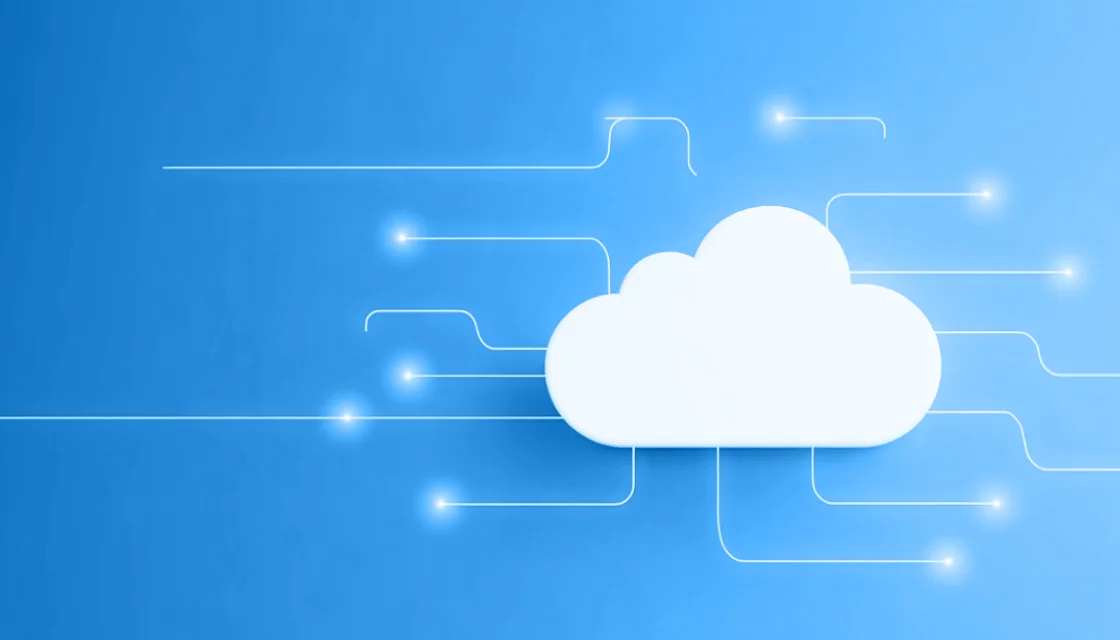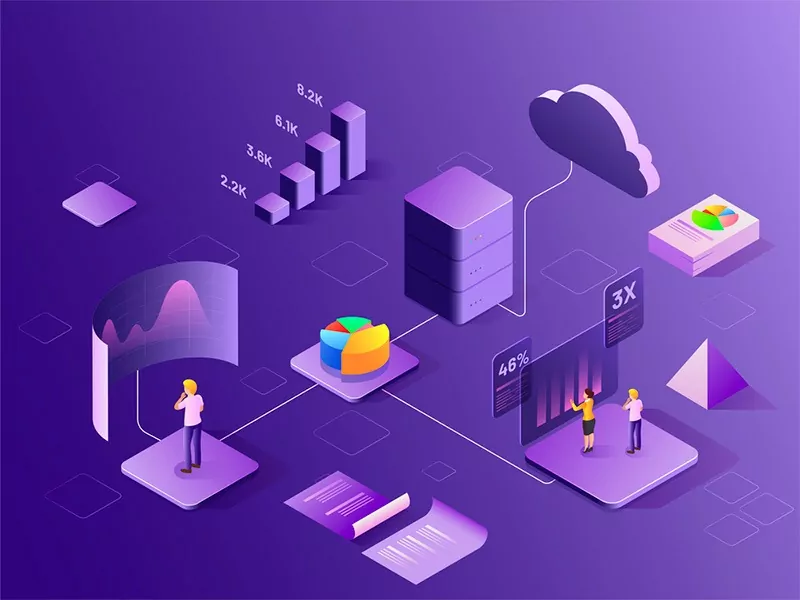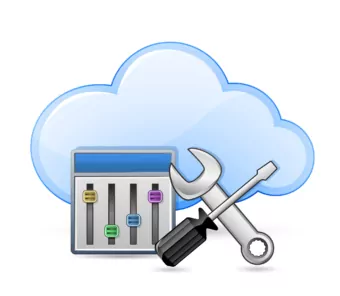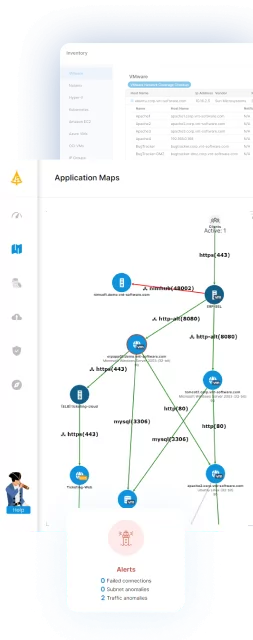What Is Cloud Cost Optimization?
Cloud cost optimization is the process of minimizing cloud computing expenses while maintaining performance, reliability, and scalability. It involves analyzing cloud usage, identifying areas of inefficiency, and implementing strategies to reduce waste and optimize resource allocation. This can lead to significant cost savings and improved financial predictability.
Cloud cost optimization combines processes, tools, and best practices aimed at ensuring organizations pay only for the cloud resources they need and use. Strategies may address over-provisioning, underused instances, and unnecessary services, targeting the elimination of waste and improvement of efficiency across cloud environments.
Key aspects of cloud cost optimization include:
- Maximizing value: Cloud cost optimization is about getting the most value out of your cloud investments by ensuring you’re only paying for what you need and use.
- Optimizing resources: It’s not just about cutting costs, but also about optimizing resource utilization to balance cost with performance and other business requirements.
- Strategic approach: A proactive and continuous effort to analyze, plan, and optimize cloud spending.
- Intelligent procurement: Choosing the right instance sizes, using commitments and spot instances strategically, optimizing storage tiers and managing data lifecycles.
- Governance and accountability: Ensuring costs are allocated to the right teams and departments and creating a culture of financial accountability.
This is part of a series of articles about cloud computing costs
Table of Contents
Toggle- What Is Cloud Cost Optimization?
- The Importance of Cloud Cost Optimization
- Core Principles of Cloud Cost Optimization
- Tips from the Expert
- Challenges in Cloud Cost Optimization
- Key Tools and Technologies for Cloud Cost Optimization
- Key Strategies and Best Practices for Cloud Cost Optimization
- Supporting Cloud Cost Optimization with Faddom Dependency Mapping
The Importance of Cloud Cost Optimization
By focusing on optimizing cloud costs, organizations can achieve significant benefits that go beyond just financial savings. Below are the key reasons why cloud cost optimization is so important:
- Cost savings: One of the most immediate benefits of cloud cost optimization is the potential for significant savings. Studies show that a substantial portion of cloud spending is often wasted. By actively managing and optimizing cloud resources, organizations can cut unnecessary costs and ensure that every dollar spent aligns with business needs.
- Increased efficiency: Inefficient use of cloud resources—such as underused servers or over-provisioned instances—can lead to substantial waste. Cloud cost optimization helps identify and consolidate underutilized resources, improving the overall efficiency of cloud environments. For example, using autoscaling tools to adjust server capacity based on real-time demand can help companies avoid paying for unnecessary resources.
- Smarter budgeting and forecasting: Cloud cost optimization enables more accurate budgeting and forecasting by providing a clearer understanding of resource usage and spending patterns. Tools for cost monitoring and reporting offer visibility into which services are driving costs, enabling companies to make informed decisions about future investments.
- Improved application performance: Optimizing cloud costs also results in better performance management. Through cloud cost optimization, organizations gain insights into the performance needs of different workloads.
- Reduced security risks: While cloud cost optimization isn’t directly focused on security, it can contribute to a stronger security posture. By consolidating and eliminating unnecessary resources, organizations reduce their attack surfaces, minimizing the chances of security breaches.
- Enhanced business continuity: Cloud cost optimization helps organizations improve their resiliency by distributing resources across multiple availability zones or regions. This improves business continuity by reducing the risk of downtime and ensuring that resources are available in the event of a disruption.
- Sustainability: Optimizing cloud resources also contributes to sustainability efforts. By rightsizing services and reducing wasted resources, companies can lower their energy consumption and reduce their carbon footprints.
Core Principles of Cloud Cost Optimization
Visibility and Transparency
Achieving strong visibility and transparency is foundational to cloud cost optimization. Organizations need complete, real-time insight into their cloud consumption, cost drivers, and historical spend patterns. This requires robust instrumentation, detailed reporting, and consistent tagging of resources to trace costs back to projects, teams, or owners.
Transparent cost reporting empowers teams to understand their resource consumption and actively participate in optimization. By exposing waste—such as idle, overprovisioned, or orphaned resources—organizations can quickly identify and address inefficiencies.
Governance and Accountability
Strong governance is crucial for enforcing cloud cost management policies. This includes setting up clear ownership of resources, defining spending limits, and establishing processes for reviewing and approving new deployments. Effective governance frameworks outline roles and responsibilities, ensuring the right people oversee budget adherence and compliance with organizational policies.
Accountability is equally important. By assigning budgetary responsibility to teams or business units, organizations encourage proactive management of resource consumption. Teams are incentivized to maximize value and eliminate unnecessary expenses, while regular audits and cost reviews keep cloud usage aligned with overall business strategy.
Automation and Scaling
Automation is a key enabler of cloud cost optimization. With automated provisioning, scaling, and decommissioning, organizations can precisely match resource allocation with workload demands. This reduces the risks of human error, manual overprovisioning, and forgotten resources that continue accumulating costs.
Autoscaling features allow systems to expand or contract capacity based on real-time metrics, ensuring efficient resource usage. Automation tools also help enforce policies across cloud environments. Automated tag enforcement, budget alerts, and scheduled resource shutdowns reduce operational overhead and ensure compliance with cost-saving initiatives.
Cost Allocation and Tagging
Cost allocation and resource tagging are essential tactics for optimizing cloud spend. Tagging applies metadata to cloud resources, describing attributes like owner, environment, project, or cost center. This metadata is crucial for granular cost tracking—enabling organizations to know exactly which teams or initiatives drive expenditures and why.
Effective tagging practices support accurate chargeback and showback models, where costs are directly billed or attributed to responsible teams. This raises awareness, promotes fiscal accountability, and improves budgeting. Without consistent tagging, unidentified resources can slip through governance processes and contribute to wasted spend.

Lanir specializes in founding new tech companies for Enterprise Software: Assemble and nurture a great team, Early stage funding to growth late stage, One design partner to hundreds of enterprise customers, MVP to Enterprise grade product, Low level kernel engineering to AI/ML and BigData, One advisory board to a long list of shareholders and board members of the worlds largest VCs
Tips from the Expert
In my experience, here are tips that can help you go beyond the basics and achieve next-level cloud cost optimization:
- Adopt a “FinOps” culture early: Integrate financial accountability into engineering teams. Give developers visibility into cost data so they can design and deploy with efficiency in mind.
- Use predictive scaling instead of reactive scaling: Analyze usage patterns and apply machine learning-based autoscaling to provision resources ahead of demand spikes, avoiding over-provisioning.
- Implement resource tagging and enforce tag compliance: Tagging by project, environment, and owner enables granular cost allocation and accountability. Enforce tags at deployment to avoid “orphaned” spend.
- Leverage spot instances and preemptible VMs strategically: Use these discounted resources for fault-tolerant workloads like batch processing or testing environments to drastically cut costs.
- Consolidate underutilized resources using bin packing: Rightsize workloads and combine low-utilization VMs or containers to maximize resource density and reduce waste.
Challenges in Cloud Cost Optimization
Complex Pricing Models
Cloud providers offer diverse services with intricate pricing models involving compute, storage, data transfer, and other dimensions. Each resource type can have multiple cost variables—usage hours, reserved pricing, data egress, or regional variations. This complexity often makes it difficult for organizations to predict monthly bills or compare the cost-effectiveness of service options.
Hidden costs may arise from auxiliary services, API requests, or misconfigured network architectures. Organizations lacking specialized expertise can easily misinterpret cloud bills, fail to optimize their architectures, or overlook opportunities for savings. Keeping up with evolving pricing strategies and new offerings further complicates accurate forecasting and optimization.
Sprawl of Resources
Cloud environments are prone to resource sprawl, where teams rapidly launch instances, storage volumes, and services across regions or accounts. Without rigorous controls, resources can accumulate unnoticed—especially when projects are abandoned or responsibilities shift. This “cloud sprawl” leads to underutilized, forgotten, or orphaned resources that drive up unnecessary costs.
Mitigating sprawl requires comprehensive asset inventory, regular cleanup routines, and automated discovery processes across multi-cloud environments. Large organizations often struggle to enforce consistent practices across all business units, making sprawl an ongoing cost optimization challenge.
Dynamic Workloads
Dynamic and unpredictable workloads further complicate cost optimization efforts. Applications may have fluctuating or seasonal demand, requiring rapid scale up or down that is hard to estimate in advance. Traditional budgeting or static resource allocation fails to account for these changes, resulting in either overprovisioning (waste) or performance bottlenecks.
The key is to architect solutions for elasticity and to leverage automation: autoscaling groups, serverless functions, and real-time monitoring to synchronize resource allocation with actual demand. However, implementing these solutions at scale and integrating them across legacy and modern applications poses a technical challenge.
Key Tools and Technologies for Cloud Cost Optimization
Cost Monitoring and Visibility Tools
Leading cloud providers supply native cost monitoring platforms, such as AWS Cost Explorer or Azure Cost Management, which help organizations analyze, visualize, and forecast cloud expenditures. These tools support granular breakdown of spending by service, project, or region, enabling identification of high-cost resources and anomalous trends. Real-time dashboards and customizable reports offer actionable insights needed for effective optimization.
Third-party cost visibility tools, like Cloudability and CloudHealth, extend native capabilities with advanced analytics, flexible dashboards, and multi-cloud tracking. They also provide integration with DevOps workflows, alerting, and automation frameworks to simplify cost analysis across diverse cloud environments.
Resource Optimization Tools
Resource optimization platforms focus on matching resource allocation to workload requirements. Tools like AWS Compute Optimizer or Google Cloud Recommender analyze historical performance and utilization metrics, suggesting adjustments such as rightsizing instances, migrating to newer generations, or consolidating workloads. These recommendations help organizations eliminate overprovisioned or underused resources, reducing waste.
More advanced platforms can automate remediation, triggering resizing, reassigning instance types, or terminating idle resources without manual intervention. This continuous optimization ensures that resource provisioning dynamically reflects changing demands, supporting both cost reduction and service reliability goals.
Automation and Autoscaling Tools
Automation and autoscaling tools are integral to real-time cloud cost optimization. Platform-native solutions like AWS Auto Scaling, Google Cloud Autoscaler, and Kubernetes Horizontal Pod Autoscaler adjust resource capacity dynamically based on utilization metrics or schedules. This ensures workloads receive just enough resources, preventing both performance shortfalls and unnecessary overspending.
Infrastructure-as-code (IaC) frameworks, such as Terraform and AWS CloudFormation, allow organizations to standardize automated provisioning, configuration, and decommissioning of cloud resources. Coupled with automation frameworks (e.g., Ansible, Puppet), teams can rapidly enforce resource lifecycle policies and consistently implement cost-saving practices across environments.
FinOps and Governance Platforms
FinOps and governance platforms bridge financial controls with operational cloud management. FinOps solutions enable cross-functional teams to collaborate on cost tracking, forecasting, and optimization. They support chargeback/showback, tag enforcement, budget controls, and policy creation across complex, multi-cloud environments.
These platforms also provide benchmarking, custom reporting, and anomaly detection to surface cost outliers quickly. By consolidating financial and technical data, FinOps tools empower IT, finance, and engineering teams to communicate more effectively about cloud cost drivers and optimization progress.
Key Strategies and Best Practices for Cloud Cost Optimization
Organizations can improve their cost management in the cloud by implementing the following strategies.
1. Right-Sizing Resources
Right-sizing is the ongoing process of aligning provisioned cloud resources closely with actual usage needs. By analyzing historical consumption patterns, organizations can adjust instance types, database sizes, or storage classes to avoid overprovisioning. Implementing right-sizing recommendations—whether manually or automatically—directly reduces wasted expenditure while maintaining required performance and capacity.
Ongoing right-sizing requires continuous access to detailed performance data, automated recommendations, and scheduled reviews. Automation is valuable for scaling efforts across large environments, and periodic audits ensure that legacy resources don’t slip through the cracks.
2. Utilizing Reserved and Spot Instances
Cloud providers offer purchasing options like reserved instances (RIs) and spot instances to lower compute costs. Reserved instances are commitments to use specific resources over a one- or three-year period, offering significant discounts over on-demand rates. Spot instances provide access to excess cloud capacity at steeply reduced prices but can be interrupted by the provider.
Utilizing these options strategically allows organizations to match long-lived, predictable workloads with RIs and run flexible tasks (like batch processing) on spot instances. Balancing mix between on-demand, reserved, and spot resources requires careful forecasting of workload requirements and a willingness to tolerate interruptions where appropriate.
3. Optimizing Storage Solutions
Optimizing storage is a major cost-saving lever in cloud environments. Different storage classes—ranging from standard, high-performance SSDs to archival cold storage—have varying price points. Assessing workload requirements allows teams to migrate infrequently accessed data to cheaper tiers, expire obsolete backups, or use object lifecycle policies to automate data aging.
Additionally, eliminating orphaned storage volumes and cleaning up unattached resources prevents ongoing, unnecessary charges. Regular audits of storage usage patterns and cost will surface inefficiencies, and automation can enforce lifecycle and deletion policies. Choosing the right storage architecture helps maintain both performance levels and cost discipline.
4. Managing Data Transfer Costs
Data transfer—especially across regions, out of the cloud, or between services—can pose a significant, often overlooked cost driver. Providers usually charge for data egress from their networks, inter-region transfers, or accessing content delivery networks (CDNs). Poorly architected workflows can inadvertently lead to excessive, costly transfers.
Optimizing data transfer costs involves consolidating resources within single regions where possible, leveraging built-in cloud data compression options, and utilizing provider-native transfer acceleration services judiciously. Monitoring data flow patterns and correlating them to billing reports helps pinpoint and remediate cost leaks.
5. Implementing Continuous Monitoring and Alerts
Continuous monitoring, real-time alerts, and anomaly detection are essential components of a modern cloud cost management strategy. With comprehensive instrumentation, organizations can set spending thresholds, automatically notify stakeholders when usage deviates from norm, and trigger corrective actions. Monitoring tools provide visibility into usage trends and help quickly address unexpected surges or leaks.
Automated alerting, integrated with incident response workflows, ensures that teams respond rapidly to potential billing issues or misconfigurations. Continuous monitoring also underpins other optimization efforts—such as right-sizing, autoscaling, and cost allocation—by providing the necessary usage data and real-time feedback.
6. Adopting FinOps Practices
FinOps is an emerging discipline that brings together financial accountability and operational best practices for cloud spending. It emphasizes collaboration between engineering, operations, and finance, ensuring cloud investments align with business goals. Adopting FinOps means establishing cross-functional teams, defining governance processes, and embedding cost-consciousness into every stage of cloud adoption and use.
FinOps practices typically include regular cost reviews, budget mapping, optimization sprints, and clear communication around spend and value delivery. Cultivating a FinOps culture builds ownership, promotes transparency, and enables continuous improvement in cloud cost control.
Learn more in our detailed guide to cloud cost optimization best practices
Supporting Cloud Cost Optimization with Faddom Dependency Mapping
Faddom is an agentless application dependency mapping platform designed to help organizations reduce cloud costs by providing real-time visibility into the connections between applications and infrastructure across both on-premises and cloud environments. By identifying underutilized resources, redundant services, and hidden dependencies, Faddom empowers organizations to make smarter decisions about rightsizing and eliminate unnecessary expenses.
With up-to-date topology maps and traffic insights, teams can make informed decisions regarding consolidation, scaling, and architectural changes without risking business continuity. Faddom offers the clarity needed to align cloud usage with actual demand and long-term optimization goals.
Discover how Faddom can help you reduce cloud waste through better infrastructure visibility by booking a demo with our experts!







